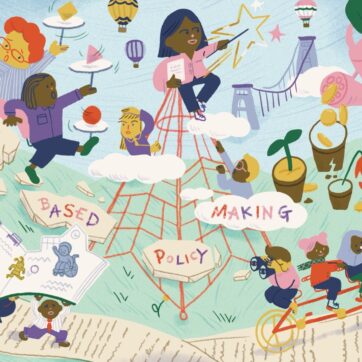There’s no better way to occupy yourself over lunch at your desk on a rainy day than browsing back issues of this blog. Doing that recently led me to realise how prevalent questions about research impact are: in the past few months alone, Valeria Izzi and Becky Murray discuss how impact doesn’t just happen, it requires dedicated resources and skillsets; Mattias Björnmalm discussed the need to focus on the process rather than the outputs, and Joanne Doyle remarked that there’s “a need for assessment processes to recognise the subtle influences of research, and make allowance for the incremental and invisible nature of impact”. Because the REF 2021 draft guidance on submissions clearly links research impact to the research environment, I wonder if we can wrap this all up in what Jenny Ames called the ‘research impact culture’.
But what sort of culture should we aim for? Recent work we have done in the DFID-ESRC Growth Research Programme (DEGRP)—to analyse where researchers were able to influence policy-makers and practitioners in low-income countries—provides five lessons we hope will be useful to others.
We commissioned a series of four case studies to help understand how researchers had engaged with policymakers and practitioners and what happened as a result. We were particularly interested to understand whether specific types of knowledge activity (simply providing the information, translating knowledge, brokering it within the policy environment, or facilitating innovative approaches to engagement) led to different types of impact.
We found that there was no clear link between the type of knowledge activity and type of impact. Instead, five cross-cutting issues emerged that we think speak more to how getting the research culture right can foster different and sometimes unexpected types of impact.
- Focus on collaboration, co-creation and an iterative approach. Received wisdom (including from Overseas Development Institute…) says that you should plan for impact from the beginning of your research project. While we still think this is good practice, it doesn’t appear to matter if you start late as long as you think carefully about how you start. A project on farmers’ attitudes towards risk in Uganda didn’t really begin to think about impact until after the research had ended. However, it then developed a highly collaborative, iterative approach to engagement; working with farmers, local and national policymakers at local to co-create policy proposals that would work at all levels. The project team and local knowledge brokers helped the Ugandan government realise that weather index insurance could be an effective way of supporting smallholder farmers’ risk management strategies, and the team is currently piloting new credit instruments with a range of finance organisations.
- Emphasising local scholarship was essential to building the credibility of the research results. While this is a stated aim of most research projects, it was core to the work of a project to align health and industrial policies in Tanzania and Kenya. From the outset, the project’s overall approach was to help African researchers build their own reputations for highly competent, credible work. African policy stakeholders were particularly keen to hear about African issues from African scholars, and at the time of writing the open access book featuring their work had been downloaded over 36,000 times. Having a specific strategy to strengthen local relationships ensures that they will last long after the project has ended.
- Networking is crucial, not to push messages to a wide range of people but to understand where the relevant conversations are happening and how to engage with them. While standard advice is to develop an engagement plan and work through it, a collaborative project between a UK university and a Ghanaian think tank studying the diffusion of innovation in low-income countries found that their connections snowballed after their first few conferences. This brought the Ghanaian think tank into the limelight, raising its profile both in Ghana and internationally. While the researchers found that saying yes to every opportunity to speak was exhausting, it paid huge dividends in terms of their ability to follow the breadth of the debates and thus the range of people reached by their messages and advice.
- It’s all about the quality of the evidence. Providing a credible database can be just as influential as providing tailored policy advice. One project researching structural transformation and growth in Africa simply plugged a data gap with evidence from Africa, completing a narrative about the sources of economic growth and re-evaluating earlier research findings. Yet this was highly influential. The story about economic transformation in Africa was already becoming clearer, but the project played a key role in building a detailed picture about how structural transformation happens, having an important influence on the shape and nature of the debate about how to foster economic growth in Africa.
- Sometimes, more is more. All four projects mentioned above used all four approaches to engagement; sometimes simultaneously, sometimes sequentially. In fact, it proved difficult to separate out which approaches they had used: iterating different types of engagement helped to strengthen local inputs and local scholarship… which improved the quality and relevance of the evidence… which helped build wider networks… which required different types of engagement… etc. While we still think it is important to have an idea who your target audience is and to develop outline plans, we believe there is also an argument for a ‘more is more’ approach.
Trish Greenhalgh has commented that achieving impact “is a messy, iterative, pragmatic and unpredictable challenge whose methodology cannot be tightly prescribed.” This is certainly what we found in these four case studies. But we think that what they all had in common was a culture that emphasised, above all, responding to local needs. It was about how the DEGRP researchers engaged, not just the topic for engagement: they didn’t need to push for impact to be effective.
Featured Image Credit: Free-Photos, via Pixabay (licensed under CC0 license)


